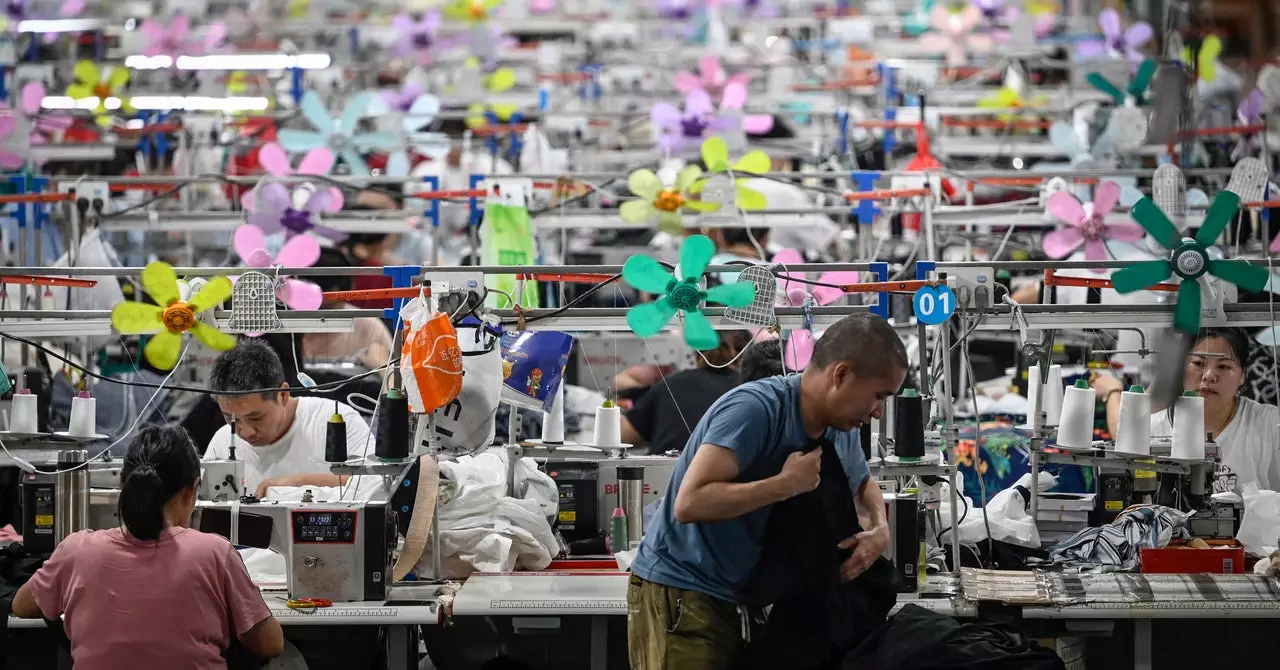In 2023, the fast-fashion powerhouse Shein solidified its position as a global mainstay, operating in 150 countries and delivering its inexpensive apparel to millions. With planes continuously traversing international routes, Shein has perfected a supply chain that thrives on delivering fashionable clothing at astonishingly low prices. Social media influencers significantly amplify Shein’s presence; videos showcasing “#sheinhaul” trends capture the attention of viewers worldwide, resulting in billions of engagements. This digital marketing approach not only captivates a vast audience but generates a wealth of data that the company efficiently analyzes to enhance its operational strategies.
Shein’s meteoric rise can be attributed to an intricate blend of rapid manufacturing and data-driven decision-making. By harnessing advanced machine-learning algorithms, Shein adeptly tracks consumer patterns and preferences. This immediate feedback loop enables the brand to predict what styles will be popular, facilitating one of the fastest turnaround times in the fashion industry. The operational agility offered by AI has allowed Shein to introduce new designs with unprecedented speed while keeping prices remarkably low.
As Shein thrives in fast fashion, it also faces mounting critiques regarding its environmental footprint. The same technologies that have propelled its rapid growth now expose the contradictions within its operational model. Despite pledging to reduce its carbon emissions by 25 percent by 2030 and targeting net-zero emissions by 2050, critics argue that these commitments ring hollow against the backdrop of the company’s sustainability report. It revealed a troubling reality where Shein nearly doubled its emissions from 2022 to 2023, casting doubt on the sincerity of its green initiatives.
Climate experts and advocates are particularly skeptical of how the ultra-efficient supply chain and the reliance on AI influence these outcomes. Sage Lenier, Executive Director of Sustainable and Just Future, articulates this concern by highlighting that AI’s role in fast fashion isn’t merely supportive; it’s transformative. She argues that without AI, the rapid manufacturing and distribution practices of companies like Shein and its competitors would not be feasible, suggesting an intrinsic link between AI advancement and environmental degradation.
Numbers That Speak Volumes
The scale at which Shein operates is formidable. In its relatively brief existence since its inception 12 years ago, the company has amassed staggering revenues—over $30 billion in 2023 alone. The speed of its production cycle is equally impressive: new designs can go from concept to garment in just ten days, and the company claims to add 10,000 new items daily. However, with a stock of approximately 600,000 available items, the environmental ramifications of this rapid output cannot be overstated.
A stark illustration of Shein’s ecological impact arises from its reported carbon emissions, which hit a staggering 16.7 million metric tons in 2023. To put that in perspective, this figure is comparable to the emissions produced by four coal-fired power plants in an entire year. Such statistics raise alarms not just about carbon footprints but also highlight a broader narrative about the fast fashion sector’s disregard for sustainability.
Beyond the emissions concerns, Shein’s business model stimulates a cycle of waste and pollution. The fast-paced nature of fashion leads to excessive textile waste and contributes significantly to microplastic pollution, tainting waterways and ecosystems. Moreover, the labor practices often associated with such companies frequently come under scrutiny, as reports of exploitation emerge. The interplay between low prices and high volumes tends to favor profit margins at the expense of ethical labor standards.
As Gen Z consumers—who constitute a crucial part of Shein’s demographic—show increasing frequency in purchasing items from the brand, the ethical implications deepen. While this generation expresses a heightened awareness of sustainability, they also contribute to an industry that stands in stark contrast to those very values.
Ultimately, Shein’s story serves as a microcosm of the broader dynamic within fast fashion. By melding advanced technologies and hyper-responsive manufacturing, it has redefined shopping for millions. However, as environmental challenges mount, the question remains: can such a model coexist sustainably with our planet’s finite resources, or is it destined for collapse under the weight of its own excess? The evolution of Shein may very well dictate the future landscape of not just fashion, but our shared environmental fate.


Leave a Reply